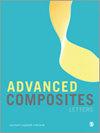修边碳纤维增强聚合物的表观荧光显微镜:计算机断层扫描的替代方法
IF 2.1
4区 材料科学
Q3 MATERIALS SCIENCE, COMPOSITES
引用次数: 4
摘要
X射线计算机断层扫描(XCT)可用于检测边缘铣削的碳纤维增强聚合物(CFRP)缺陷。值得注意的是,该方法能够显示无法通过传统方法(如基于触针的表面质量测量方法或更新颖的表面质量检测方法)捕获的表面下缺陷。虽然这种方法很有用,但由于设备成本、扫描时间和图像分辨率高,可能会使人望而却步。XCT通常会产生错误预测损伤或模糊损伤的伪影,并且根据机器的X射线功率,通常无法解决纤维直径的损伤,这在观察表面/次表面的铣削质量时至关重要。本研究利用表观荧光(EF)光学显微镜提供高质量的光学图像,作为XCT的替代方案,通过深度观察CFRP材料的损伤。给出了新损伤准则的计算方法,并对该方法进行了验证,将EF与XCT进行了比较。观察到织物和单向(UD)材料在与切削刃0°、45°、90°和−45°方向上的亚表面损伤,以证明存在典型缺陷。与在边缘铣削的CFRP表面上的理论直切相比,EF方法产生的一种新度量提供了总损伤面积。该方法表明,对于切削刃的不同纤维方向,存在不同的表面下损伤,这突出了对机械加工刃进行深度分析的明确需求。此外,该方法被证明是XCT的一种合适的替代方法,有可能进一步发展工业航空航天和CFRP机械加工零件的汽车质量控制。本文章由计算机程序翻译,如有差异,请以英文原文为准。
Epifluorescent microscopy of edge-trimmed carbon fibre-reinforced polymers: An alternative to computed tomography scanning
X-Ray computed tomography (XCT) can be used to detect edge-milled carbon fibre-reinforced polymer (CFRP) defects. Significantly this method is able to show subsurface defects that cannot be captured by traditional methods such as stylus-based or more novel areal methods of surface quality measurement. While useful, this method can be prohibitive due to high equipment cost, scanning time and image resolution. XCT can often produce artefacts which falsely predict damage or obscure damage and depending on machine X-ray power often cannot resolve damage to fibre diameter which is critical when observing milled quality of the surface/subsurface. This study utilises epifluorescent (EF) optical microscopy to provide high-quality optical images as an alternative to XCT to observe through-depth damage of CFRP materials. The method of computing the novel damage criteria is presented, as well as the validation of the method which compares EF to XCT. Subsurface damage of fabric and unidirectional (UD) materials in 0°, 45°, 90° and −45° orientations to the cutting edge is observed to demonstrate typical defects. A novel metric resulting from the EF method provides a total area of damage when compared to a theoretically straight cut across the face of the edge-milled CFRP. The method shows that different subsurface damage exists for different fibre orientations to the cutting edge, highlighting the clear need for through-depth analysis of machined edges. In addition, the method is shown to be a suitable alternative to XCT with scope for further development of industrial aerospace and automotive quality control of machined CFRP parts.
求助全文
通过发布文献求助,成功后即可免费获取论文全文。
去求助
来源期刊

Advanced Composites Letters
工程技术-材料科学:复合
自引率
0.00%
发文量
0
审稿时长
4.2 months
期刊介绍:
Advanced Composites Letters is a peer reviewed, open access journal publishing research which focuses on the field of science and engineering of advanced composite materials or structures.
 求助内容:
求助内容: 应助结果提醒方式:
应助结果提醒方式:


